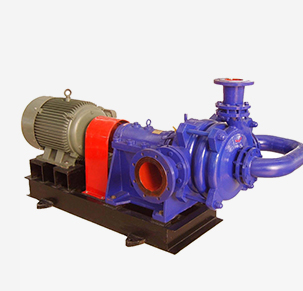English
- Afrikaans
- Albanian
- Amharic
- Arabic
- Armenian
- Azerbaijani
- Basque
- Belarusian
- Bengali
- Bosnian
- Bulgarian
- Catalan
- Cebuano
- Corsican
- Croatian
- Czech
- Danish
- Dutch
- English
- Esperanto
- Estonian
- Finnish
- French
- Frisian
- Galician
- Georgian
- German
- Greek
- Gujarati
- Haitian Creole
- hausa
- hawaiian
- Hebrew
- Hindi
- Miao
- Hungarian
- Icelandic
- igbo
- Indonesian
- irish
- Italian
- Japanese
- Javanese
- Kannada
- kazakh
- Khmer
- Rwandese
- Korean
- Kurdish
- Kyrgyz
- Lao
- Latin
- Latvian
- Lithuanian
- Luxembourgish
- Macedonian
- Malgashi
- Malay
- Malayalam
- Maltese
- Maori
- Marathi
- Mongolian
- Myanmar
- Nepali
- Norwegian
- Norwegian
- Occitan
- Pashto
- Persian
- Polish
- Portuguese
- Punjabi
- Romanian
- Russian
- Samoan
- Scottish Gaelic
- Serbian
- Sesotho
- Shona
- Sindhi
- Sinhala
- Slovak
- Slovenian
- Somali
- Spanish
- Sundanese
- Swahili
- Swedish
- Tagalog
- Tajik
- Tamil
- Tatar
- Telugu
- Thai
- Turkish
- Turkmen
- Ukrainian
- Urdu
- Uighur
- Uzbek
- Vietnamese
- Welsh
- Bantu
- Yiddish
- Yoruba
- Zulu
Telephone: +86 13120555503
Email: frank@cypump.com
Nov . 09, 2024 07:29 Back to list
Selecting a Sewage Ejector Pump for Your Basement Bathroom Needs
The Importance of Sewage Ejector Pumps for Basement Bathrooms
When considering the plumbing needs of a basement bathroom, homeowners often encounter a unique challenge the elevation of the sewage line in relation to the basement’s location. Since sewage traditionally flows downward due to gravity, any bathroom situated below the main sewer line must utilize a sewage ejector pump to ensure proper waste disposal. This article delves into the key aspects of sewage ejector pumps for basement bathrooms, highlighting their importance, functioning, and maintenance.
Understanding Sewage Ejector Pumps
A sewage ejector pump is designed to pump waste and sewage from a lower level bathroom to the main sewer line. Instead of relying solely on gravity, this system elevates wastewater away from the basement, making it possible to install bathrooms in areas where it wouldn’t ordinarily be feasible.
The pump comprises several key components, including a motor, a tightly sealed basin, a float switch, and discharge piping. When waste enters the basin, the float switch detects the rising water level and activates the pump. The pump then grinds the waste and pushes it up through the discharge line to the home’s sewage system. This process is critical for maintaining sanitary conditions and preventing sewage backups in the basement.
Advantages of Installing a Sewage Ejector Pump
1. Increased Property Value A basement bathroom adds convenience and living space to a home, enhancing its overall value. A sewage ejector pump allows homeowners to maximize this space by providing an effective waste disposal solution.
2. Versatility Sewage ejector pumps are not limited to bathrooms—they can service laundry rooms, kitchens, and other fixtures that may be lower than the main sewer line. This versatility allows homeowners to customize their basement space according to their needs.
3. Reduced Risk of Backups Traditional plumbing systems can sometimes fail, leading to sewage backups, which can cause significant damage and health hazards. By utilizing a sewage ejector pump, homeowners reduce the risk of such incidents, ensuring their basement remains a clean and functional area.
sewage ejector pump for basement bathroom

Installation Considerations
Installing a sewage ejector pump is a task that requires careful planning and professional expertise. Key factors include the size of the pump, the layout of the plumbing system, and local building codes. It is essential to choose a pump that matches the expected wastewater volume and to ensure that it is installed correctly to prevent operational issues.
Many homeowners opt for professional installation to guarantee that the pump functions efficiently and to comply with local regulations. An experienced plumber can help assess the specific requirements of the basement bathroom and recommend the best pump for the job.
Maintenance and Troubleshooting
Regular maintenance is crucial to ensuring the longevity and efficiency of a sewage ejector pump. Homeowners should routinely check the pump for any signs of wear, ensure the float switch moves freely, and inspect the discharge pipes for blockages. Annual professional servicing is also advisable to identify potential issues before they become significant problems.
In the event of unusual noises, persistent clogs, or foul odors, it’s essential to address these symptoms promptly. Ignoring these signs can lead to costly repairs and severe health risks associated with sewage backups.
Conclusion
Sewage ejector pumps play a vital role in facilitating the installation of basement bathrooms, turning what could be an unusable space into a functional part of the home. With their ability to effectively manage wastewater, these pumps not only enhance living spaces but also protect against sanitary hazards. By understanding their functionality, benefits, and maintenance needs, homeowners can make informed decisions that maximize both comfort and property value in their homes.
-
Horizontal Split Case Pump with GPT-4 Turbo | High Efficiency
NewsAug.01,2025
-
ISG Series Pipeline Pump - Chi Yuan Pumps | High Efficiency, Durable Design
NewsAug.01,2025
-
Advanced Flue Gas Desulfurization Pump with GPT-4 Turbo | Durable & Efficient
NewsJul.31,2025
-
ISG Series Vertical Pipeline Pump - Chi Yuan Pumps | Advanced Hydraulic Design&Durable Construction
NewsJul.31,2025
-
ISG Series Vertical Pipeline Pump - Chi Yuan Pumps | Energy Efficient & Low Noise
NewsJul.31,2025
-
pipeline pump - Chi Yuan Pumps Co., LTD.|High Efficiency&Low Noise
NewsJul.31,2025










